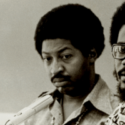 A new study led by Jennifer Barber, a research professor at the Institute for Social Research’s Survey Research Center and Population Studies Center and a professor of sociology at the University of Michigan, found that young African American women tend to live closer to pharmacies than White women, but those pharmacies are less likely to provide easy access to condoms and other resources relating to reproductive health.
A new study led by Jennifer Barber, a research professor at the Institute for Social Research’s Survey Research Center and Population Studies Center and a professor of sociology at the University of Michigan, found that young African American women tend to live closer to pharmacies than White women, but those pharmacies are less likely to provide easy access to condoms and other resources relating to reproductive health.
The study found that young African American women tend to live nearly a mile closer to pharmacies than young White women — 1.2 miles compared to 2.1 miles. But those pharmacies are more likely to be independent pharmacies that are open fewer hours per week and have fewer female pharmacists. These pharmacies are also less likely to provide easy access to condoms and have less access to pamphlets about birth control.
Specifically, the pharmacies more accessible to Black women are open about 65 hours per week compared to about 78 hours — a difference of almost two hours per day. Only 17 percent of these pharmacies employ female pharmacists compared to 50 percent of the pharmacies more accessible to White women.
Critically, condoms, which Dr. Barber and colleagues found to be the most common method of birth control for young Black women, are less likely to be available on the shelf versus locked in a glass cabinet in the pharmacies closer to Black women — 49 percent versus 85 percent. Pharmacies closer to Black women are also less likely to have self-checkout options.
“Women like self checkouts; they like women pharmacists; they like brochures they can grab and read on their own. I think everyone likes condoms out in the aisle rather than where you have to ask for them, especially these young women,” Professor Barber said. “When women have more trouble accessing contraceptives methods, they just use them less often.”
The full study, “Contraceptive Desert? Black-White Differences in Characteristics of Nearby Pharmacies,” was publihed in the Journal of Racial and Ethnic Health Disparities. It may be accessed here.










